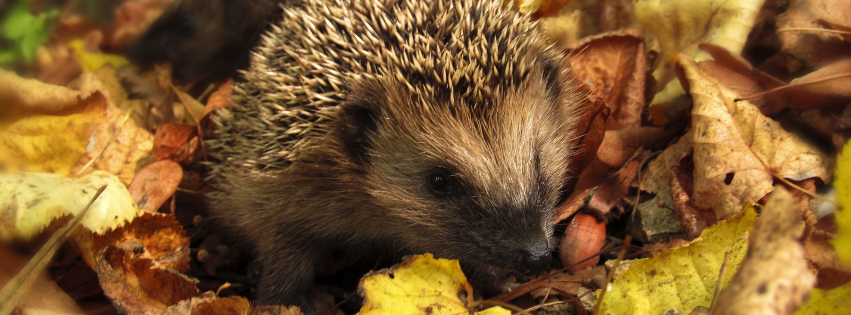
Garden Checklist for Autumn
Josephine ByrneShare

Happy Autumn, fellow green thumbs!
Finally, everybody's favourite cosy season is here. Time to get out those snug throws and top the cupboards with pumpkin-spiced coffee mixes, as well as revise your pumpkin carving strategies.
But also… it's time to tidy up and prep your garden for seasons to come. With that in mind, we thought we'd give you some tips on how you can do just that.
Y'all ready? Let's go for it!
Allotments
 ~
~
Autumn is prime time for harvesting. If you've been growing fruits and vegetables in an allotment (or vegetable patch), then begin collecting your last Summer crop. It is important to clear them, as plots will start to rot and get infected with diseases otherwise (no thank you!).
Vegetables that should be ready now are courgettes, salads, and runner beans, to name just a few. In terms of fruits, like apples and pears, be sure to monitor them, as they will be ready to harvest soon.
Sowing and Planting

~
Begin sowing hardy annual seeds like scabiosa, cornflowers, and ammi, as well as planting bulbs like daffodils and tulips. The latter can be planted in either flower borders or pots.
If you haven't already, be sure to check out our previous blog post 'Six Gardening Jobs To Do in September' for further info on bulb planting.
~
Removing Leaves

~
Sure, we all love leaves, and it's fine to leave them (pun intended) in certain parts of your garden, like hedges, where overwintering wildlife can stay, but… allowing them to pile up elsewhere can lead to your borders and lawns getting damaged. They can also make your paths slippery and even cause some of your herbaceous perennials to die.
Either rake your leaves or gather them with an extended metal grabber. The beauty of Autumn leaves is that when they are damp, you can use them to make leaf mould, which can improve your soil and be used to feed next year's plants (gotta love a life hack!).
You should also remove leaves from around pest- or disease-prone plants like roses. Neglecting to do so will lead to diseases occurring in Winter.
~
Cleaning Feeders

~
It's always a good idea to clean out your bird feeders and boxes.
Unfertilised eggs and other debris can carry disease, so clean them with hot water before they go back out again.
Tidying Borders

~
Keeping your borders tidy is also essential to cultivating a healthy garden.
Clear any dead stems and foliage on perennials situated in your borders. When your compost is ready to use, spread it over your borders' soil. This will feed next year's growth and help insulate the roots when Winter frosts pick your garden as their next destination.
In terms of lawn borders, you can maintain a neatly cut and edged lawn by mowing it one last time. Set your mower blades higher than what you would normally do so the grass will stay long during Winter. Cut your edges with an edging tool to keep their lines looking pristine.
Removing Supports

~
Take a moment to remove canes and other plant supports. Once you've removed them, wash or wipe off any soil. Let them then dry off before storing them inside, or somewhere sheltered, so as to prevent bad weather potentially causing damage to them.
~
Cleaning Your Pond

~
Leaves that have fallen to the bottom of your pond reduce water quality and have a bad effect on wildlife. Fishing them out won't hurt (great pun, I know).
You should also remove any pumps or fountains, making sure to clean and drain them before storing them away for Winter.
Removing Crops

~
Remove all crops and crop residues. This will stop pests and diseases from developing.
Should you decide not to replant the ground with any Winter crops, and if conditions are still mild enough, then sow a cover crop or green manure, or even cover the ground with organic mulch to protect it from the impending colder Winter weather.
Plant New Hedges

~
Last but not least, why not plant a new hedge? One that's wildlife-friendly!
We need to support wildlife now more than ever; planting bushes is a great way to do that. Berry-producing hedges like hawthorn or shrubs like pussy willow can help support insects like butterflies. And who doesn't like butterflies?
And that's it for this week, folks.
It's been a pleasure having you.
Stay tuned for more worthwhile content. Goodbye for now!
